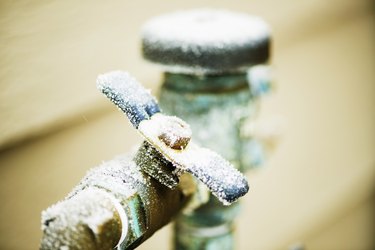Essential Tips for Avoiding Frozen Pipes in Winter Seasons
Essential Tips for Avoiding Frozen Pipes in Winter Seasons
Blog Article
Are you looking for suggestions on Preventing and dealing with frozen pipes?

Winter can damage your pipes, particularly by freezing pipes. Here's just how to stop it from occurring and what to do if it does.
Intro
As temperature levels drop, the danger of frozen pipelines boosts, potentially resulting in pricey repair services and water damage. Recognizing how to prevent frozen pipelines is vital for home owners in chilly climates.
Understanding Frozen Pipelines
What triggers pipelines to freeze?
Pipes freeze when revealed to temperatures listed below 32 ° F (0 ° C) for extended durations. As water inside the pipes ices up, it broadens, taxing the pipe walls and possibly causing them to burst.
Dangers and problems
Frozen pipelines can bring about water supply disruptions, residential or commercial property damages, and costly fixings. Burst pipes can flood homes and create considerable structural damage.
Indications of Frozen Piping
Determining icy pipelines early can avoid them from bursting.
How to recognize frozen pipes
Search for lowered water flow from taps, uncommon odors or sounds from pipelines, and visible frost on exposed pipelines.
Prevention Tips
Shielding susceptible pipelines
Cover pipelines in insulation sleeves or use heat tape to secure them from freezing temperatures. Focus on pipes in unheated or outside locations of the home.
Home heating techniques
Maintain indoor rooms effectively warmed, particularly areas with plumbing. Open up cabinet doors to allow warm air to distribute around pipes under sinks.
Safeguarding Outside Plumbing
Garden hoses and exterior faucets
Detach and drain pipes garden pipes prior to wintertime. Install frost-proof faucets or cover outside taps with protected caps.
What to Do If Your Pipes Freeze
Immediate actions to take
If you believe frozen pipelines, keep faucets open to alleviate stress as the ice melts. Utilize a hairdryer or towels taken in warm water to thaw pipelines slowly.
Long-Term Solutions
Structural modifications
Think about rerouting pipes far from exterior wall surfaces or unheated locations. Include additional insulation to attics, basements, and crawl spaces.
Upgrading insulation
Buy top notch insulation for pipelines, attics, and walls. Correct insulation aids maintain constant temperature levels and lowers the threat of icy pipes.
Conclusion
Preventing icy pipelines requires aggressive measures and fast actions. By comprehending the causes, signs, and preventive measures, home owners can protect their plumbing throughout winter.
6 Proven Ways to Prevent Frozen Pipes and Protect Your Home
Disconnect and Drain Garden Hoses
Before winter arrives, start by disconnecting your garden hoses and draining any remaining water. Close the shut-off valves that supply outdoor hose bibs and leave the outdoor faucet open to allow any residual water to drain. For extra protection, consider using faucet covers throughout the colder months. It’s also important to drain water from any sprinkler supply lines following the manufacturer’s directions.
Insulate Exposed Pipes
Insulating your pipes is an effective way to prevent freezing. Pipe insulation is readily available at home improvement stores and is relatively inexpensive. Pay close attention to pipes in unheated areas such as the attic, basement, crawl spaces, or garage. Apply foam insulation generously to create a buffer against the cold. You can also wrap your pipes in heat tape or thermostat-controlled heat cables for added warmth.
Seal Air Leaks
Inspect your home for any cracks or openings that could let in cold air. Seal any holes around the piping in interior or exterior walls, as well as the sill plates where your home rests on its foundation. Additionally, make sure to keep your garage door closed unless you’re entering or exiting. Leaving it open creates a significant air leak that can lead to frozen pipes.
Allow Warm Air Circulation
During cold snaps, it’s essential to allow warm air to circulate evenly throughout your home. Leave interior doors ajar to promote better airflow. Open kitchen and bathroom cabinets to help distribute heat consistently around the rooms. If you have small children or pets, be sure to remove any household chemicals or potentially harmful cleaners from open cabinets for safety.
Let Faucets Drip
A small trickle of water can make a big difference in preventing ice formation inside your pipes. When temperatures drop significantly, start a drip of water from all faucets served by exposed pipes. This continuous flow helps prevent the water from freezing. Additionally, running a few faucets slightly can relieve pressure inside the pipes, reducing the chances of a rupture if the water inside does freeze.
https://choateshvac.com/6-proven-ways-to-prevent-frozen-pipes-and-protect-your-home/

We were shown that write-up about How To Avoid Freezing Pipes through someone on another site. Enjoyed reading our blog posting? Please quickly share it. Help another person find it. Bless you for being here. Revisit us soon.
About This Report this page